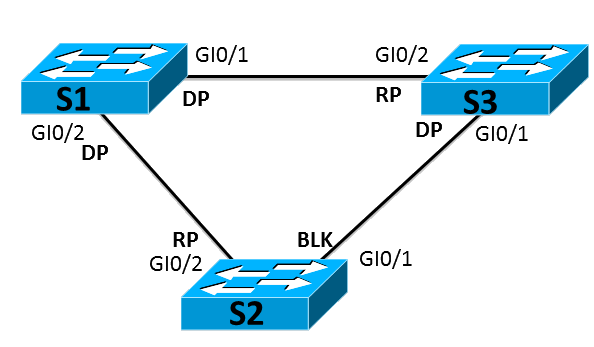The Ending of Layer Two Redundancy
Although layer two redundancy should never end, this is the final chapter of understanding layer two redundancy in the network. Last week I talked about how and why STP (IEEE 802.1D) is important in the network and the problems and causes of not having it which can turn your network against you and everybody on it. Today’s post will talk about how a switch decides which one is in charge on the network and which ones aren’t.
When STP is configured it first elects a root switch. This puts all of its switch ports in a forwarding state, when a switch has all of its ports in a forwarding state more than likely it is the root switch. Every other switch or non-root switch has to choose which port has the least cost to reach the root switch and this port is called Root Port (RP) If this port fails becomes disconnected and otherwise unable to transfer information there are other ports called designated ports (DP) these are ports are put on standby depending on the STP configuration and all other ports are put into a blocking state. If you look at the picture below there is only path from each switch so logically the switches in the network only see one path frames can travel but physically there are multiple links connected.

How does STP determine what switch is root? Remember that the switches must agree based on the bridge ID all switches when they first turn on think they are the root switch until with a switch with lower bridge ID is received then start broadcasting that switch. A technician can change the priority of a switch to force that switch to become root by issuing the command below.
Switch(config)#spanning-tree vlan 1 priority
Changing the root switch in a production network will cause network outages so planning is important. If you don’t put the priority or all the switches have that same priority the switches look at their own MAC address whoever has the lowest wins the election of becoming the root switch. In a production environment Cisco recommends the core switches to be the root the switches and also add security which is another day :)
Although this the end of today’s post, STP is not over there is a lot more behind the scenes that make it what it is. So keep this blog in mind as I really want to get in depth of STP its counters like Hello, max age, and more. The algorithm behind it, the costs of each link depending on the bandwidth and much more, like always I hope this information is helpful. Tell what you think, comment, rate, share on this material and let me know the next topic to cover either ICND1 or ICND2.
Related articles
- The Beginnings of Layer Two Redundancy (ryansrealm.com/ciscoskills)
- Cisco Discovery Protocol (ryansrealm.com/ciscoskills)